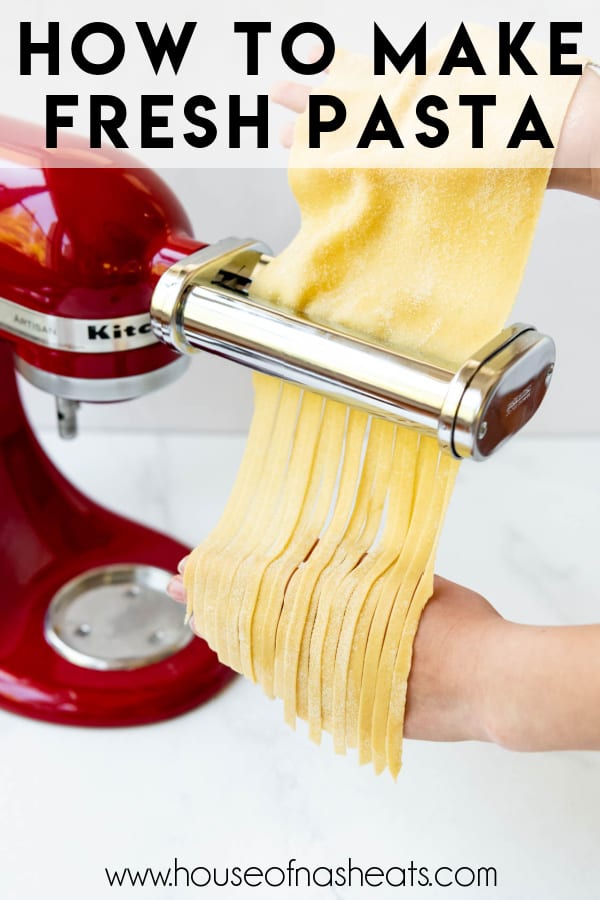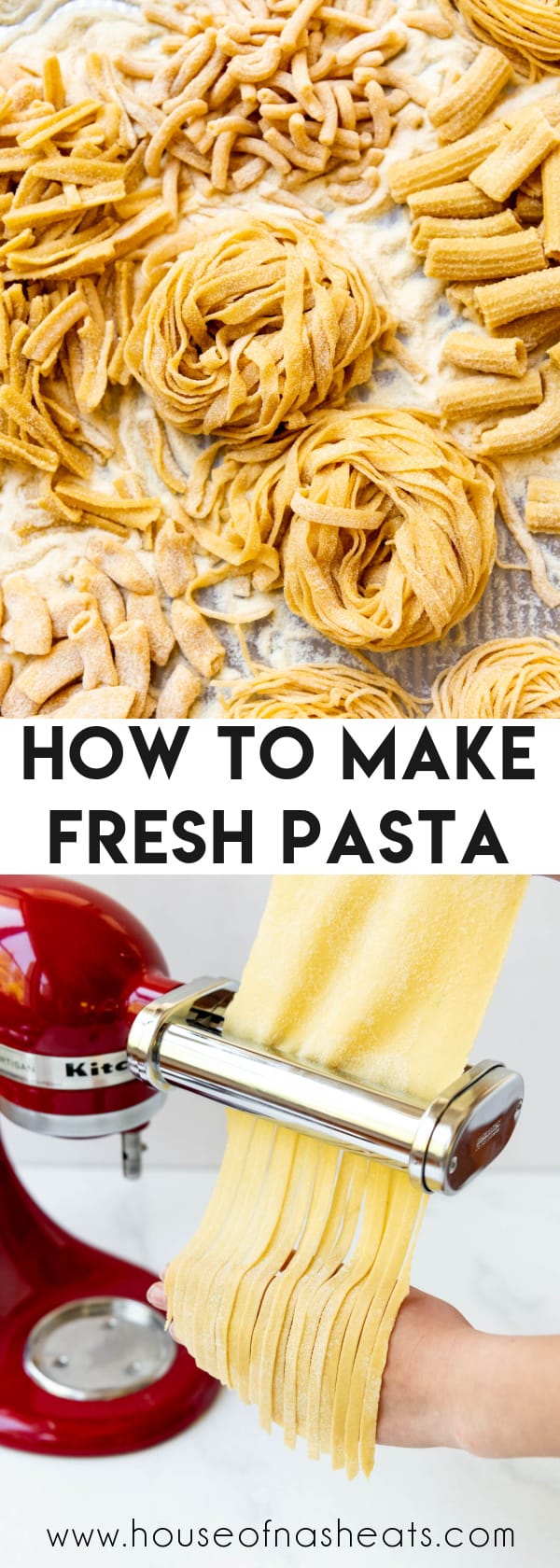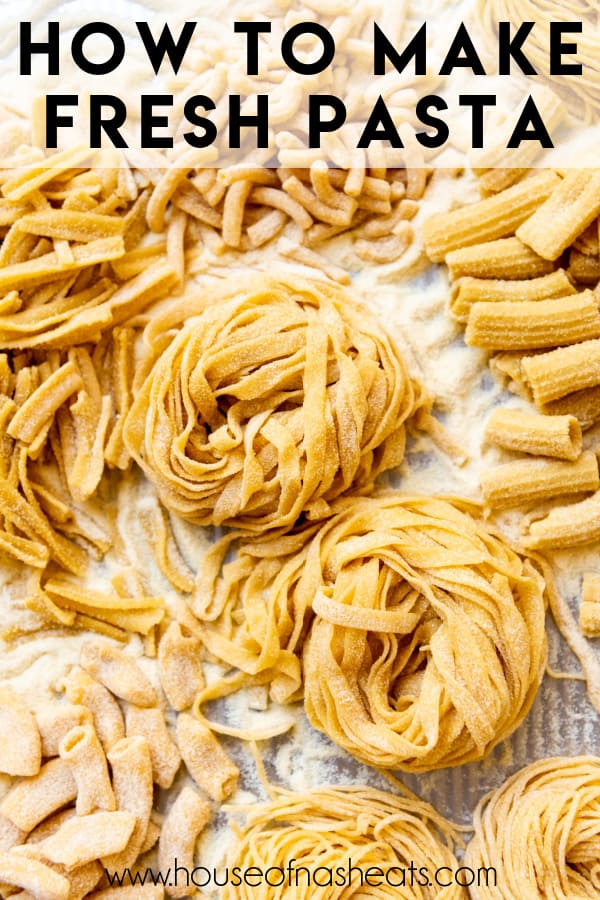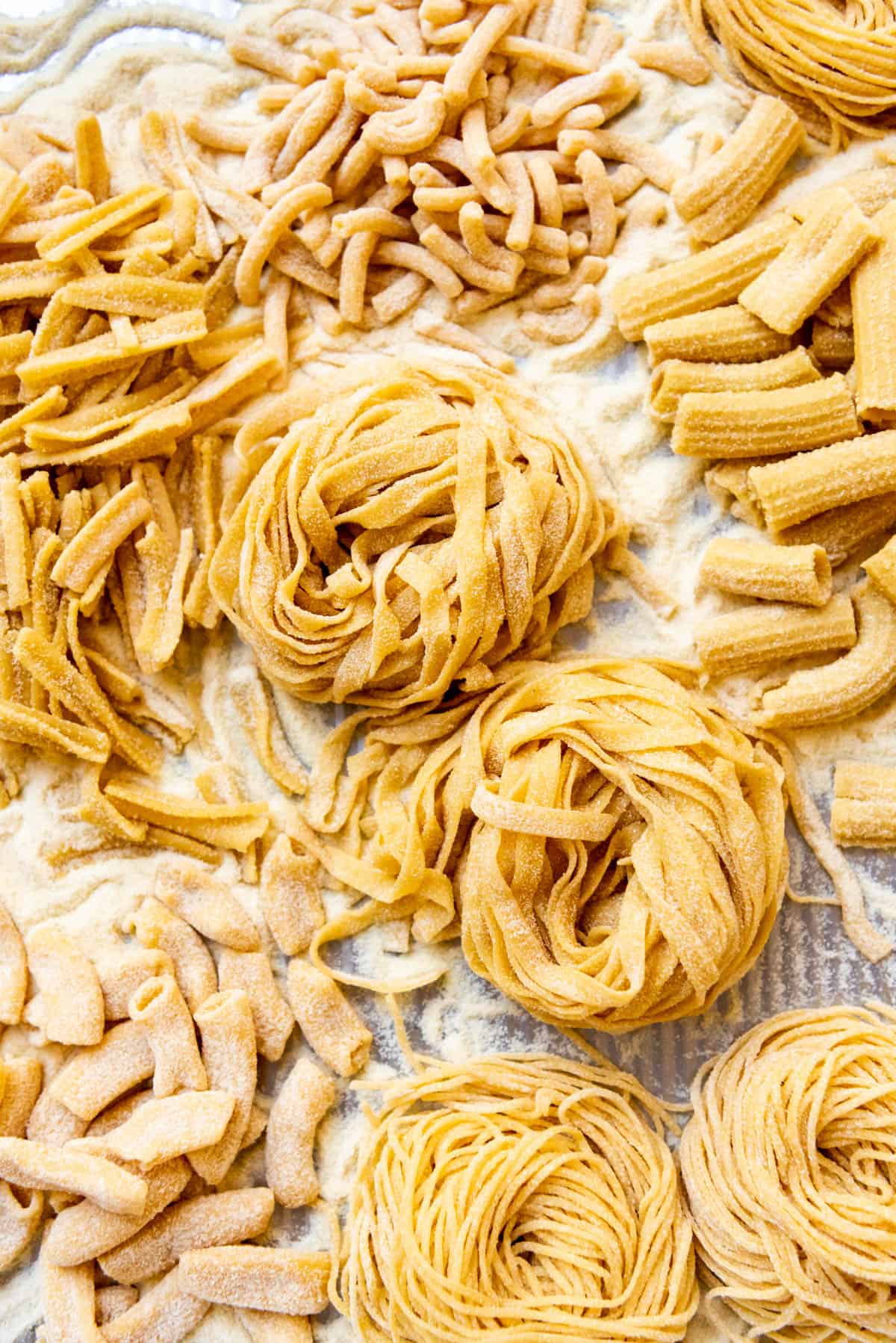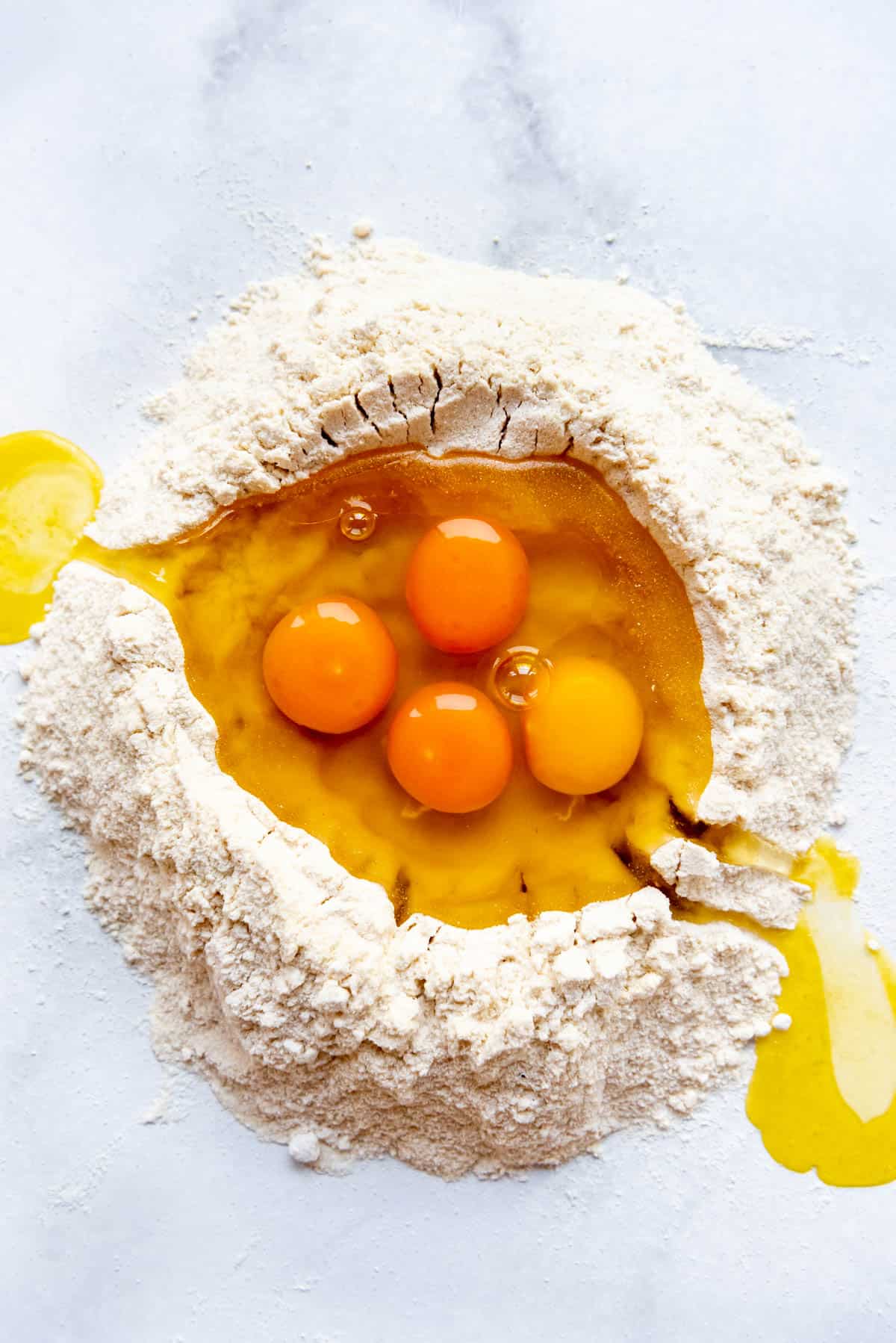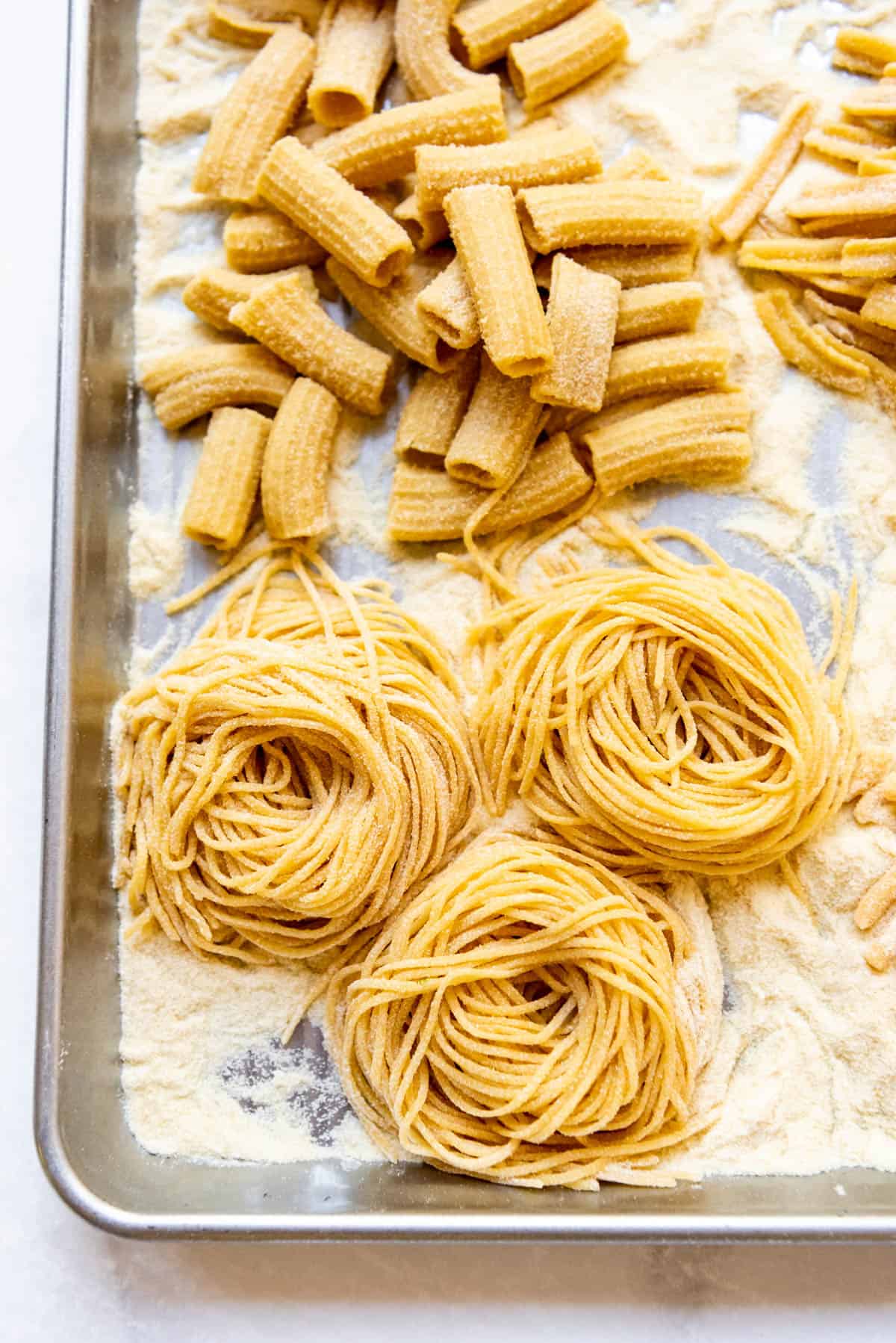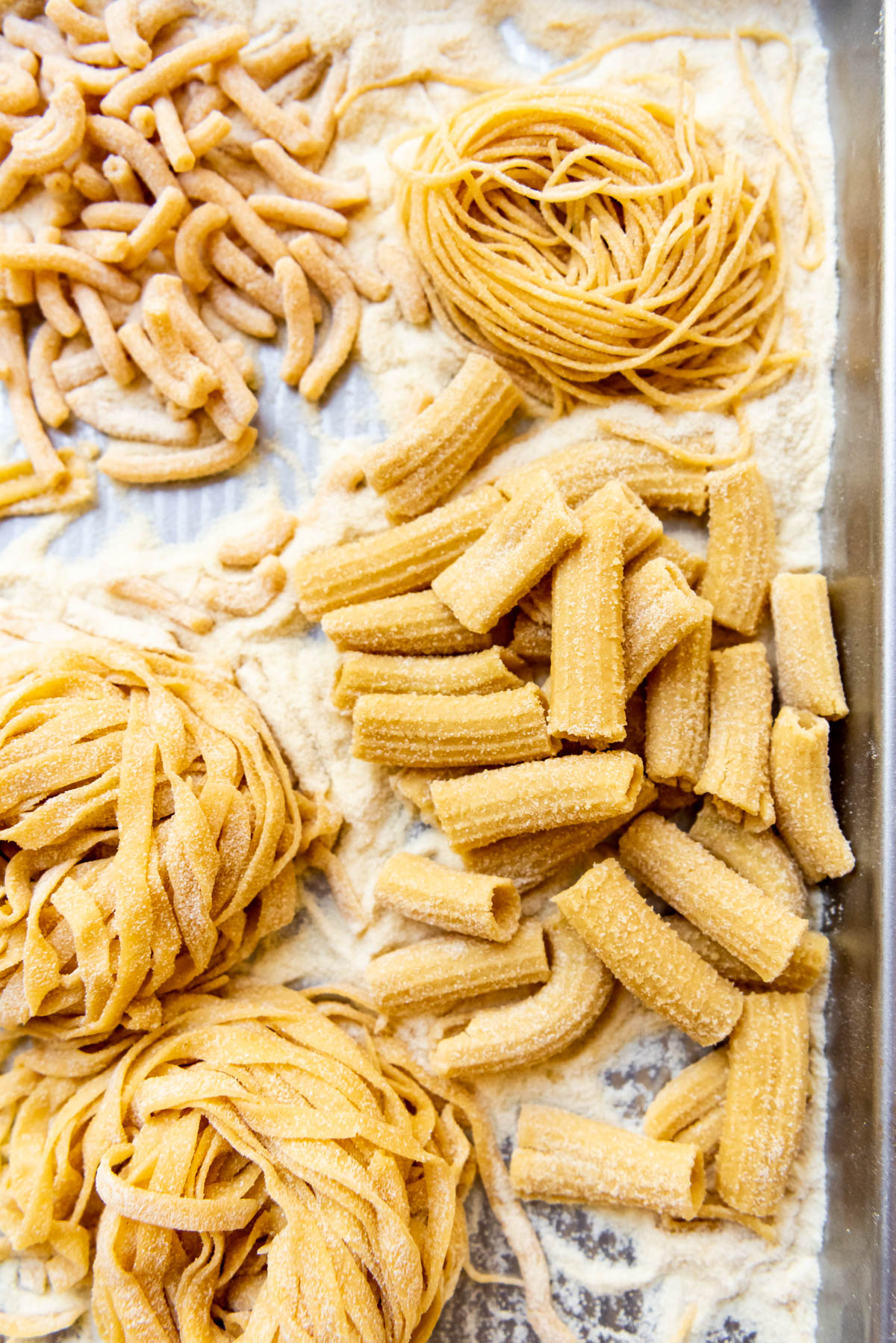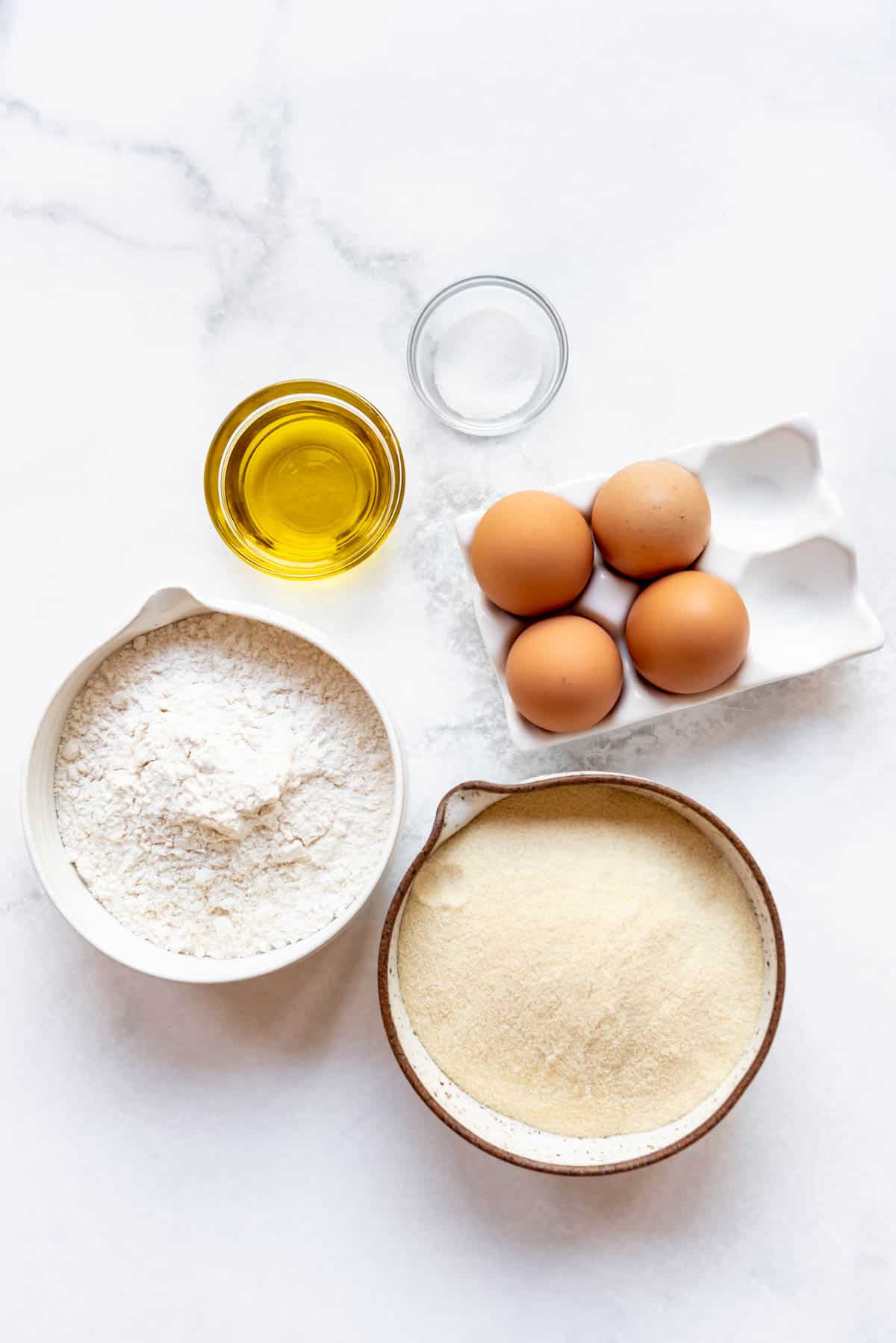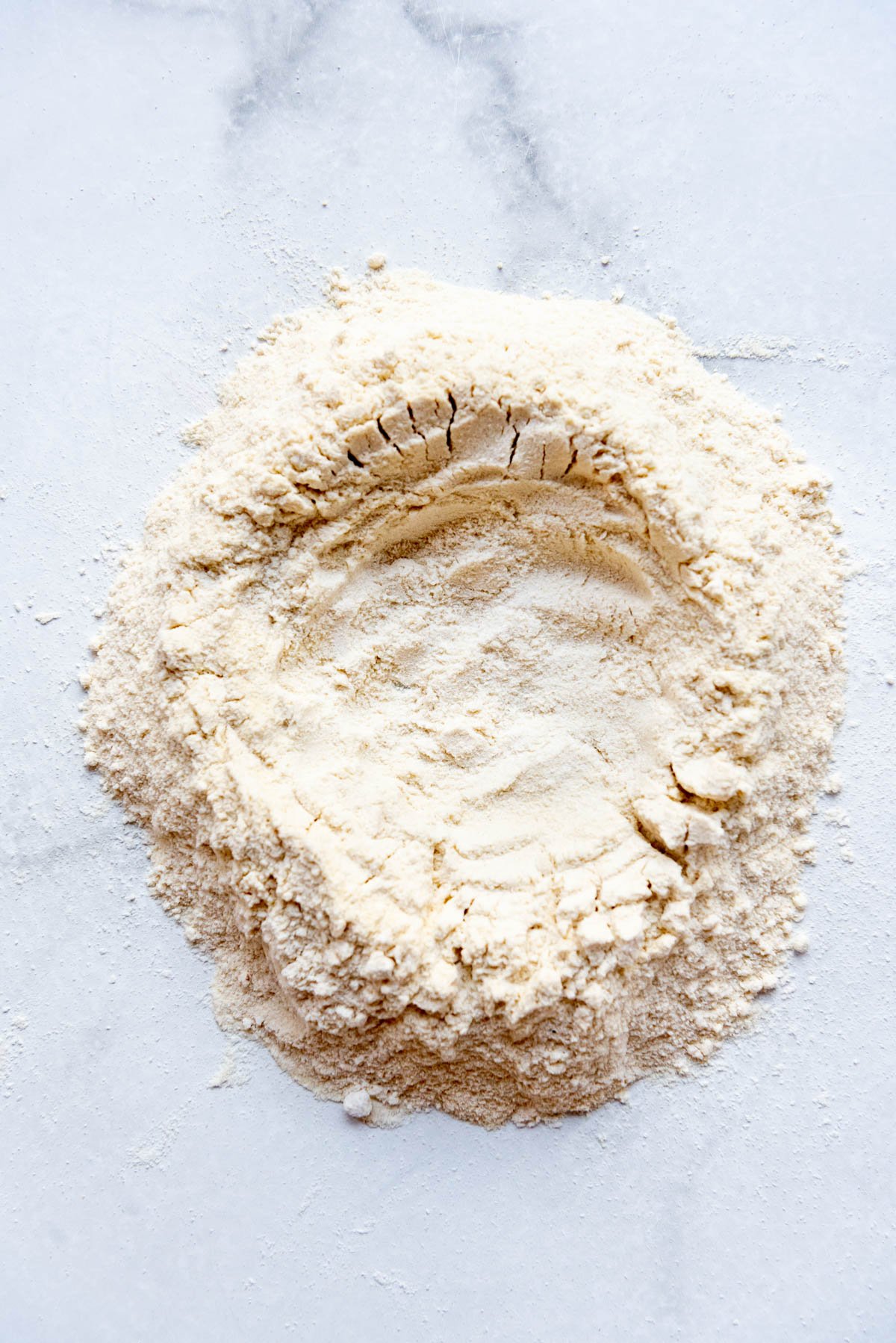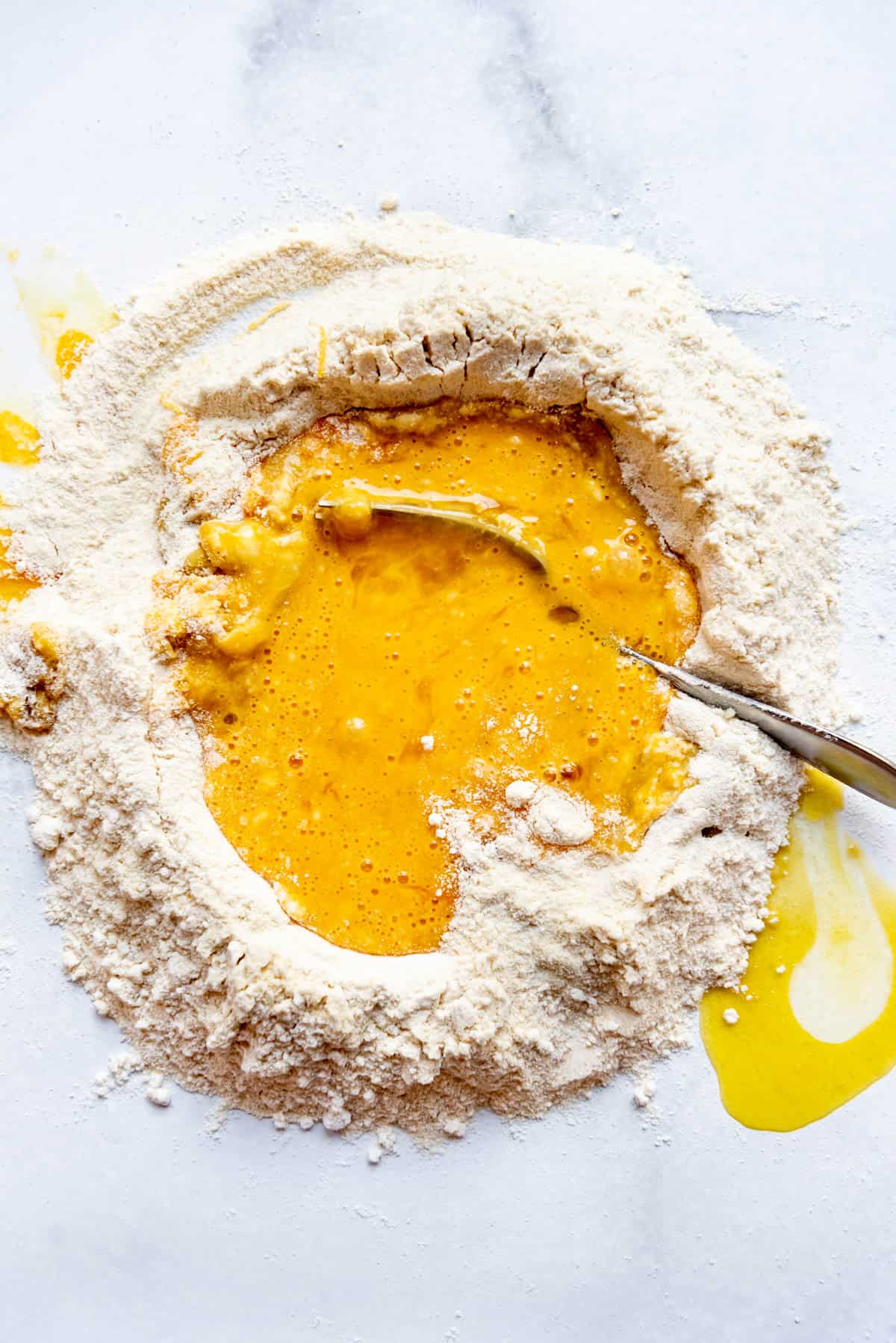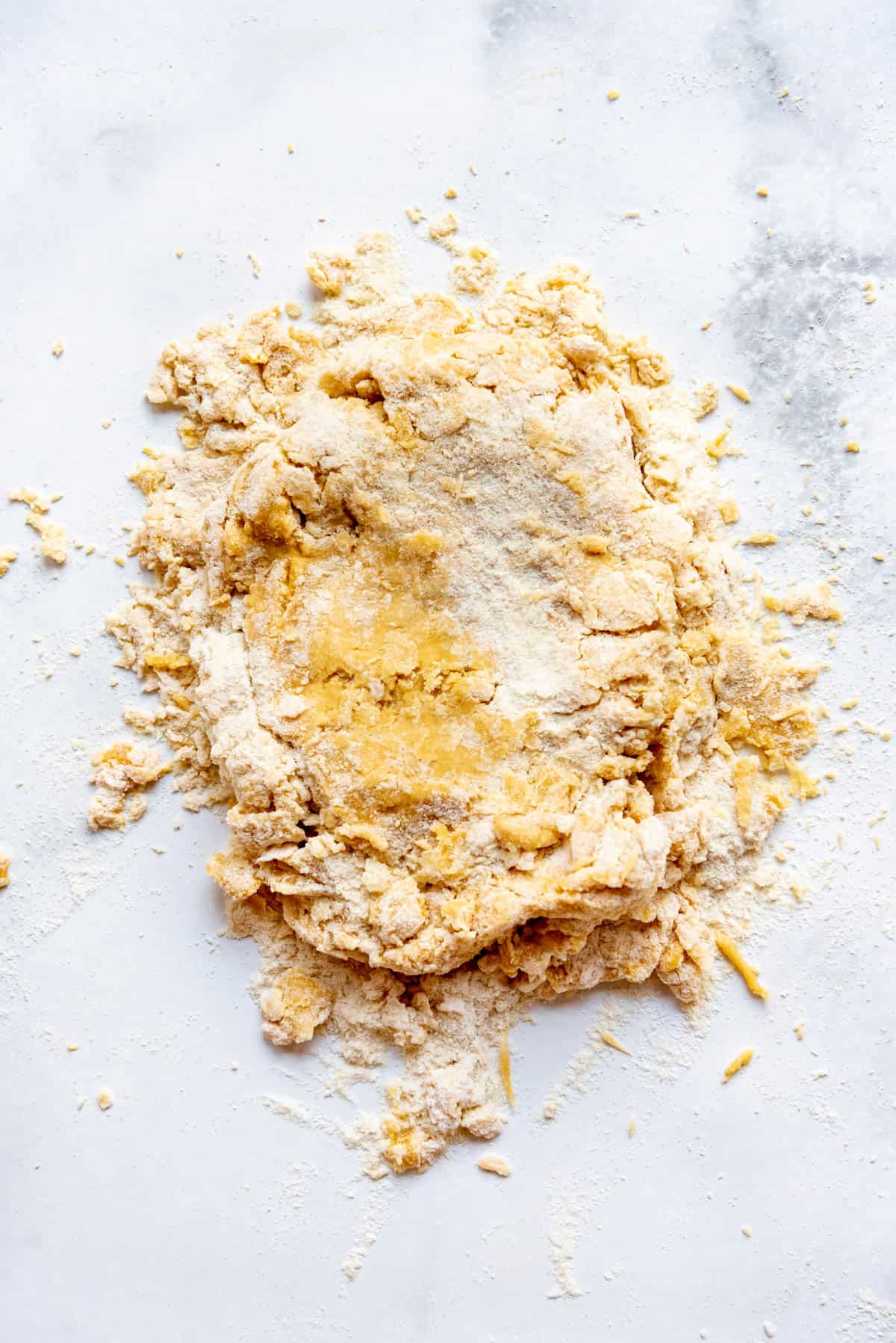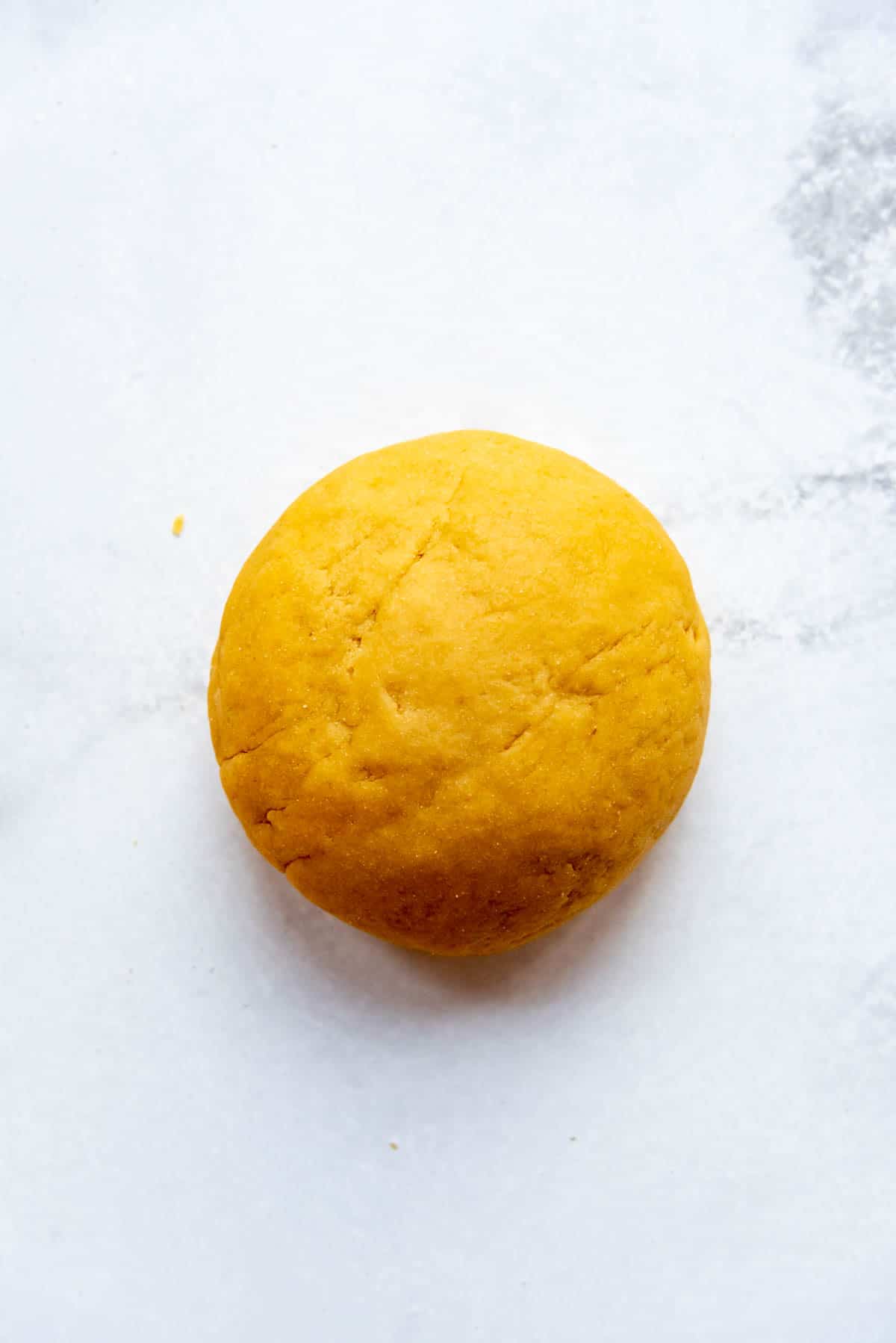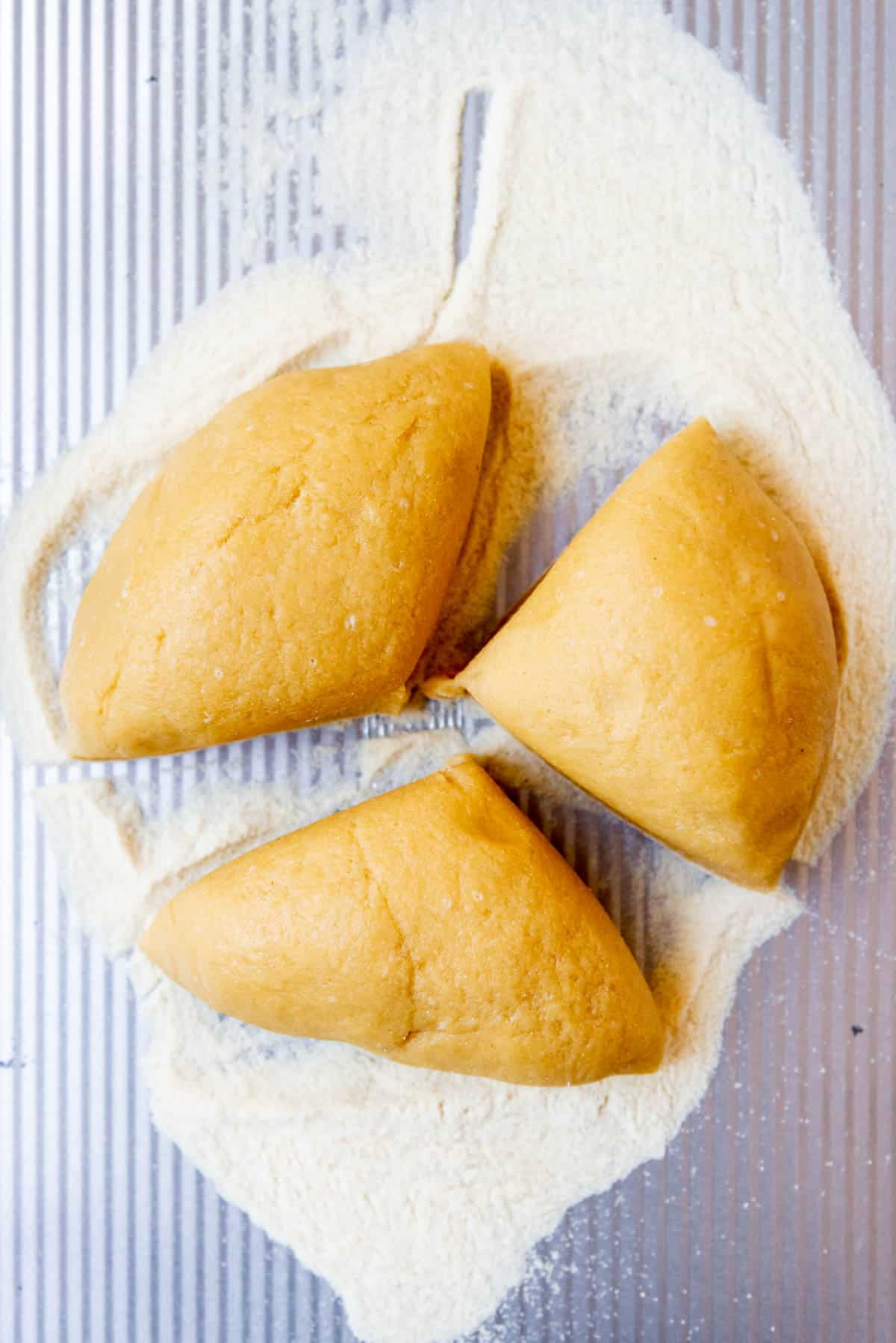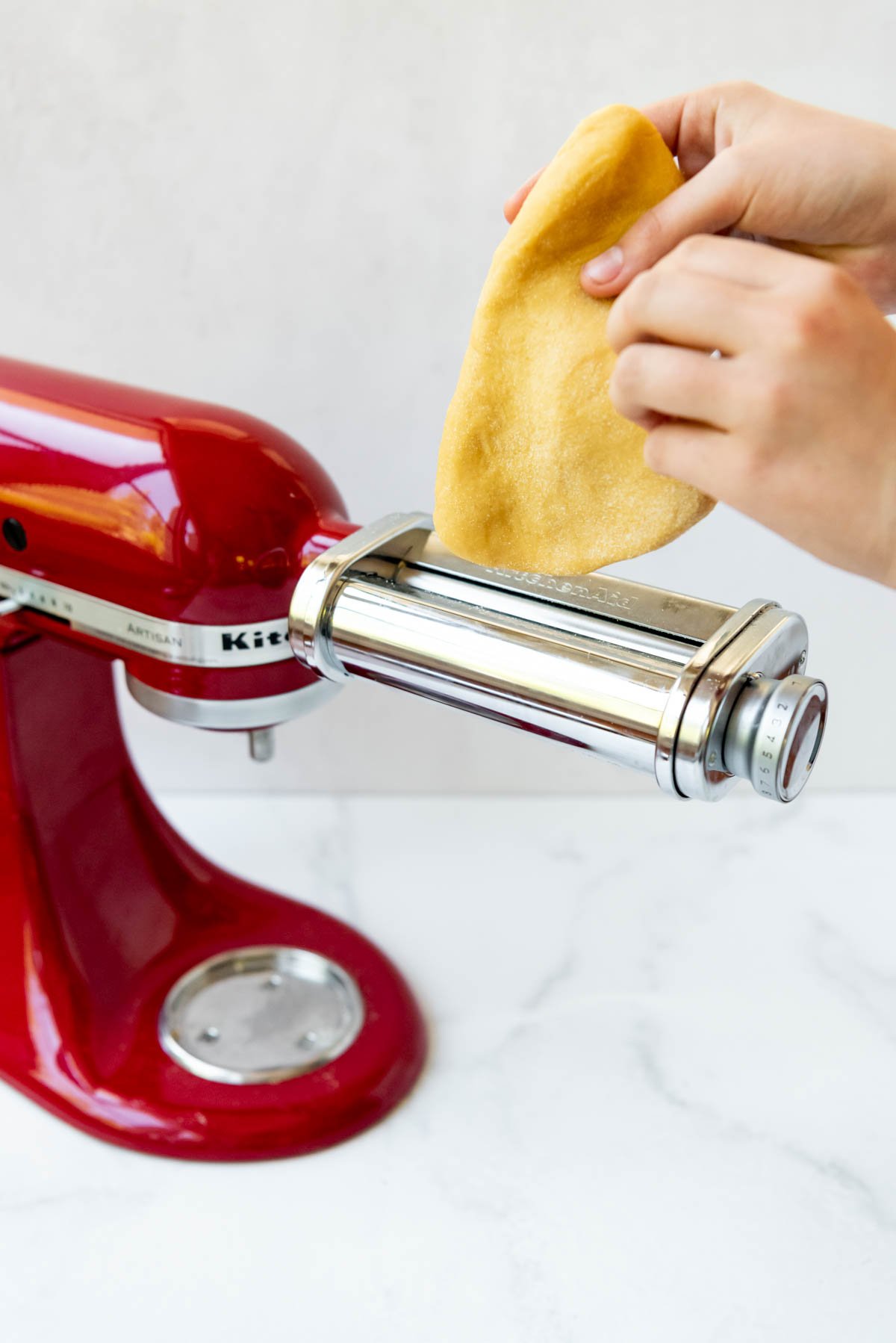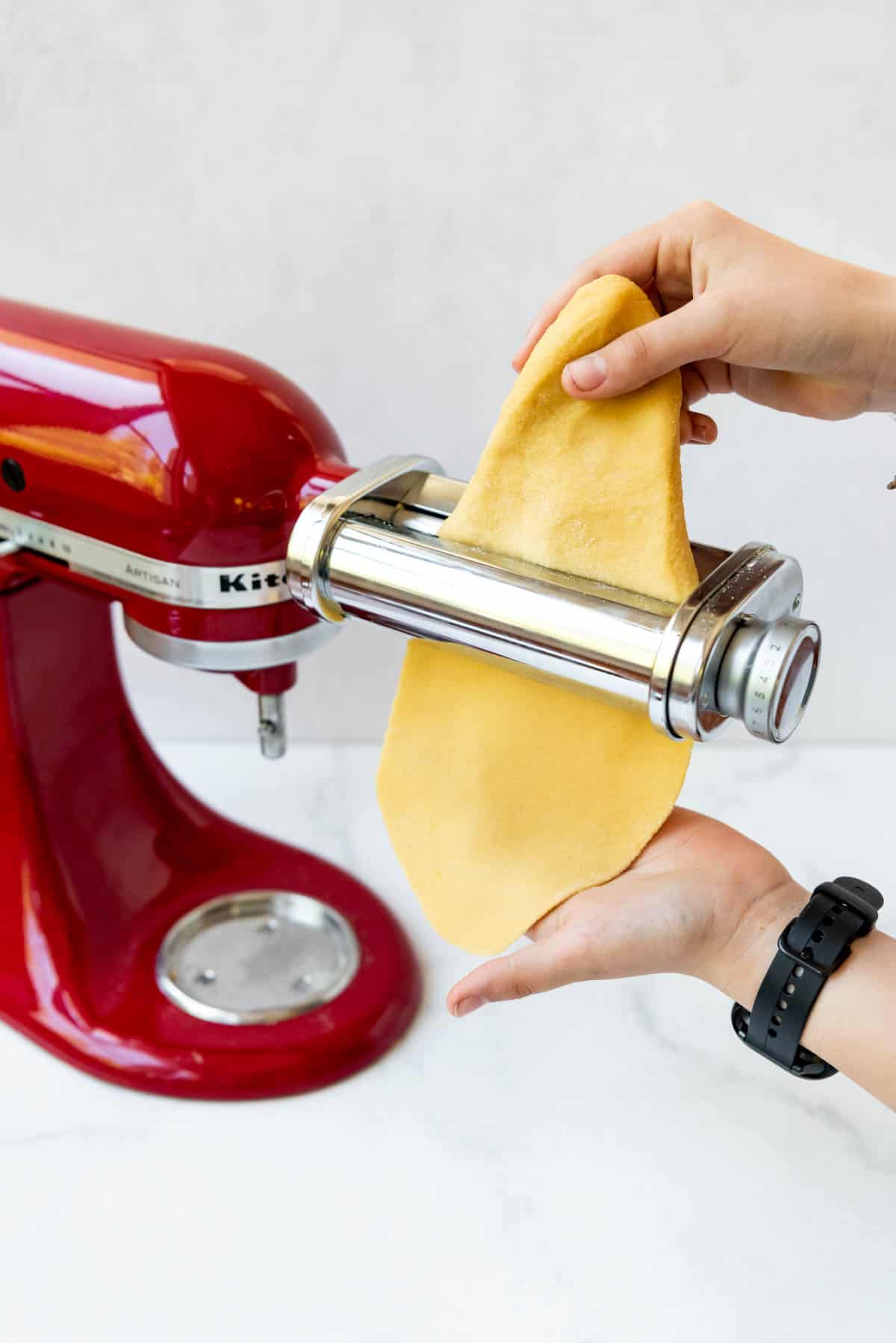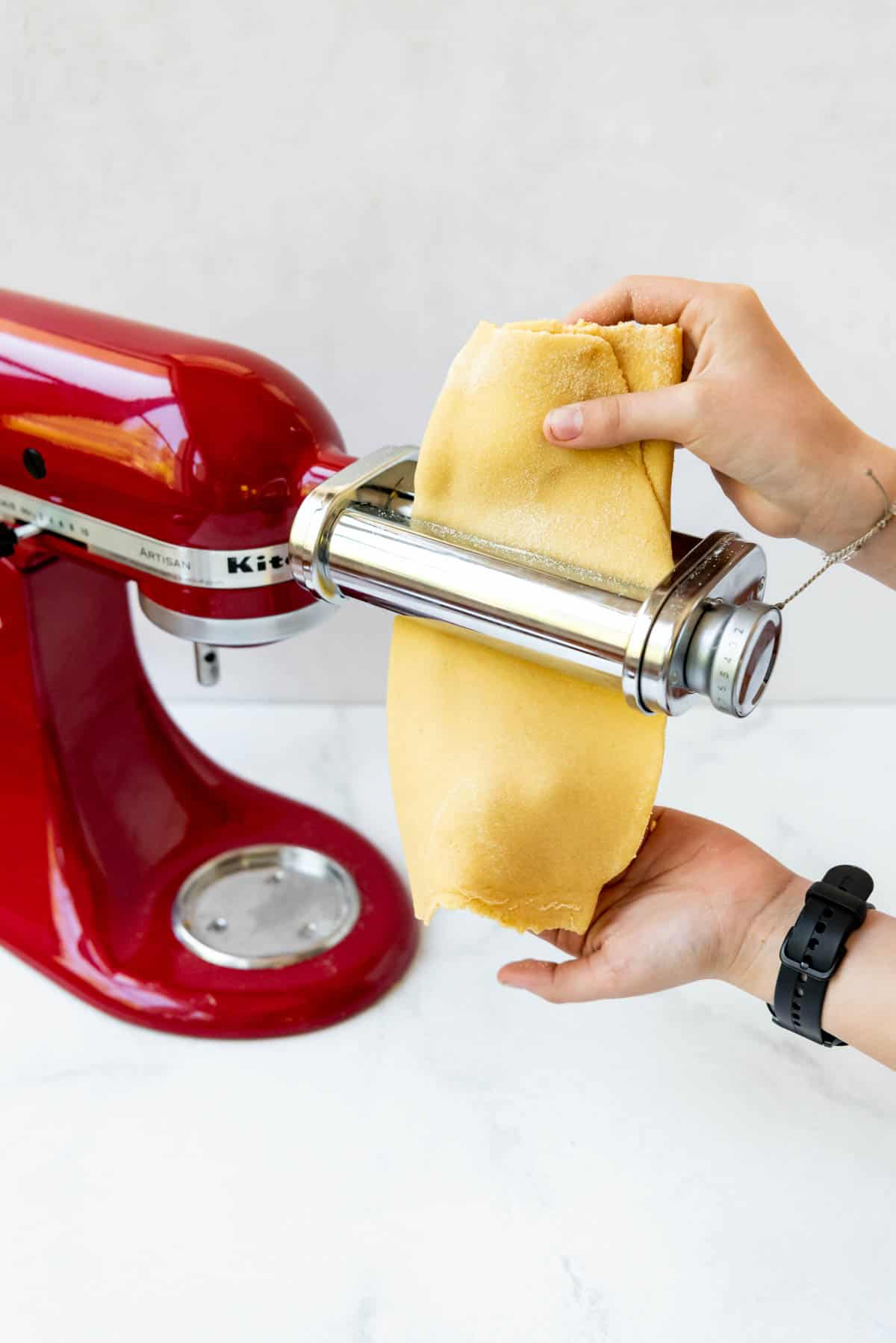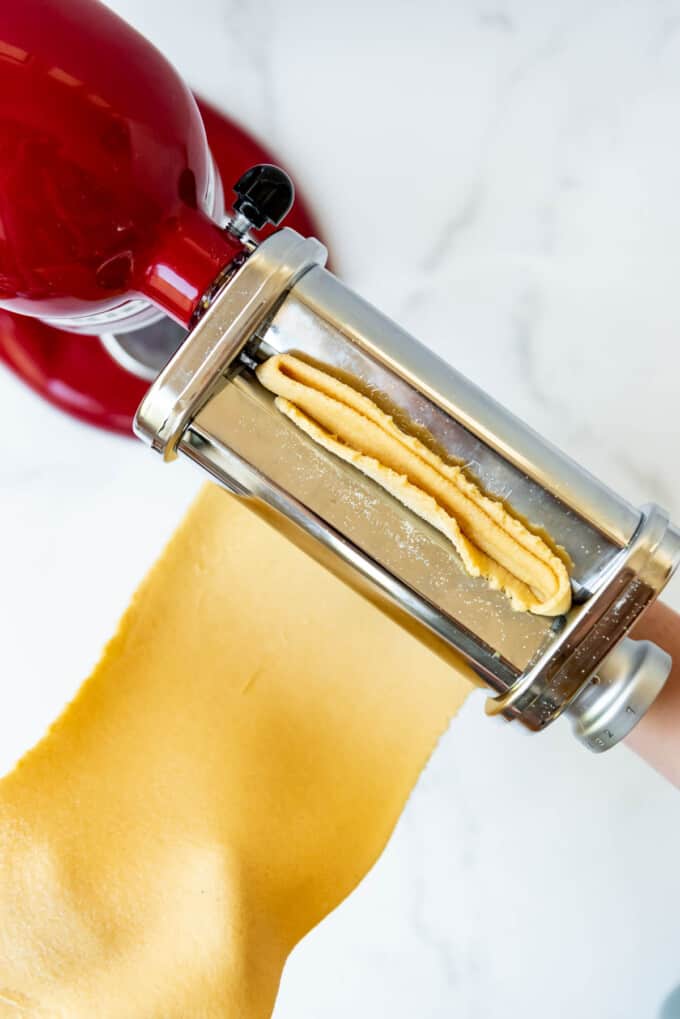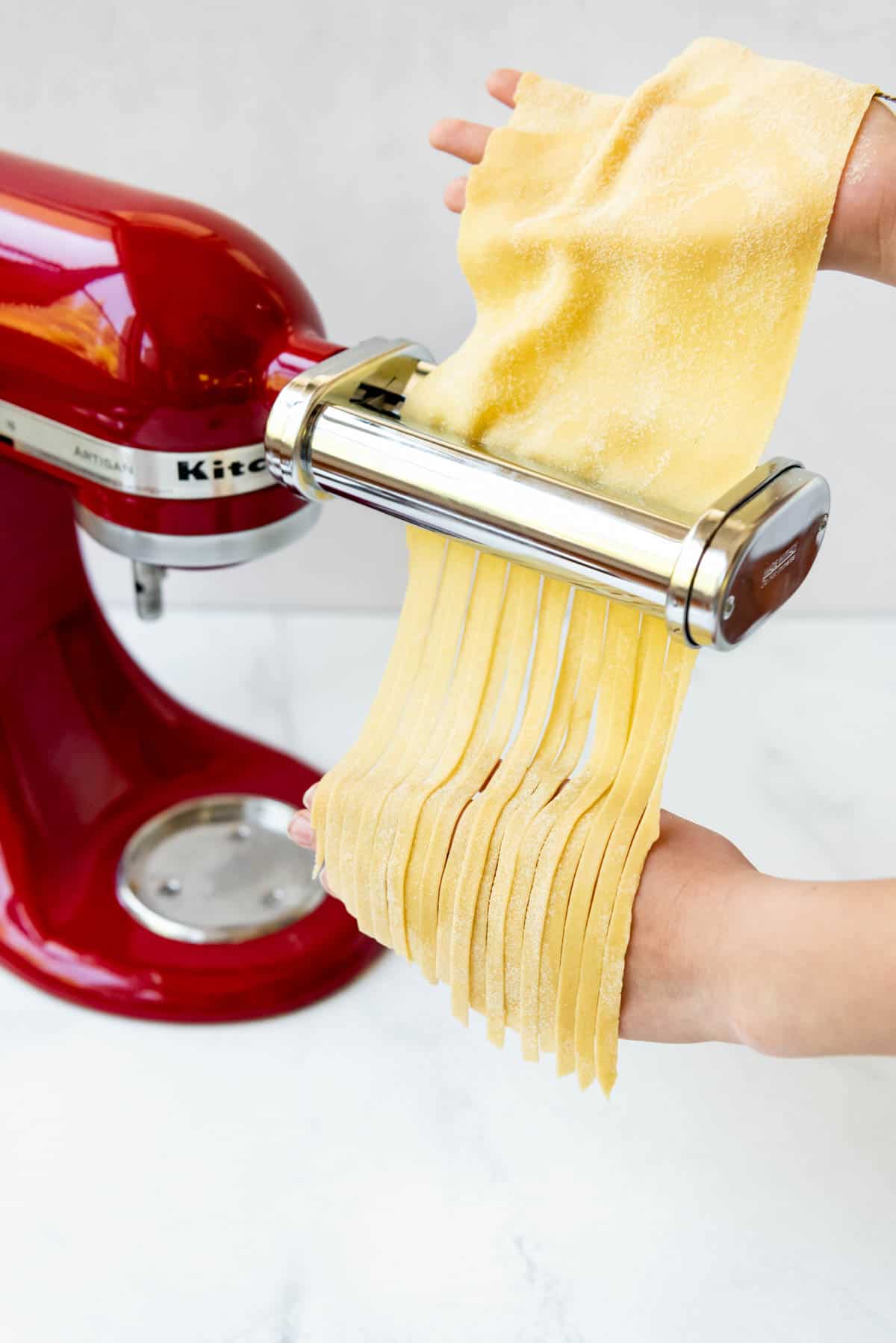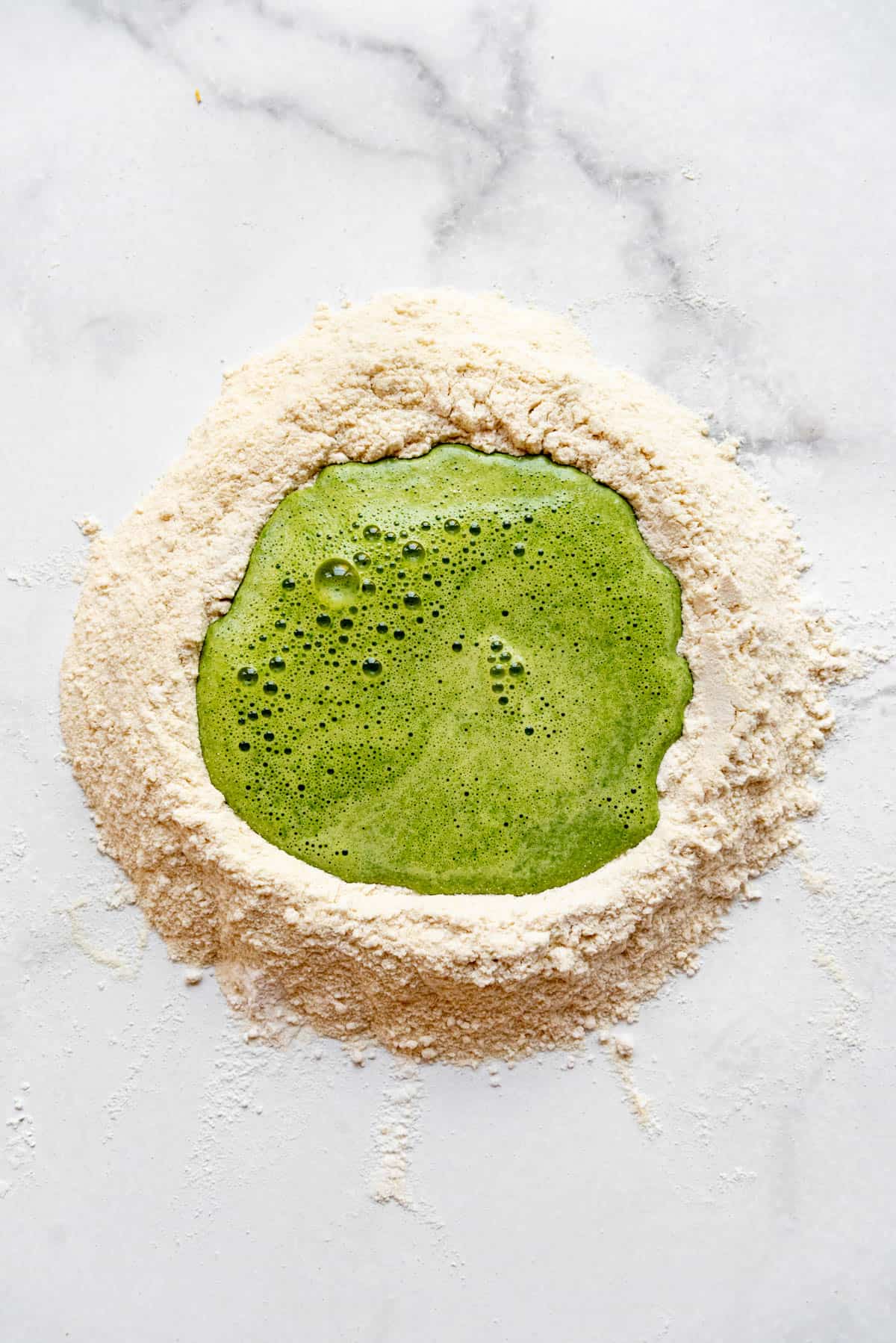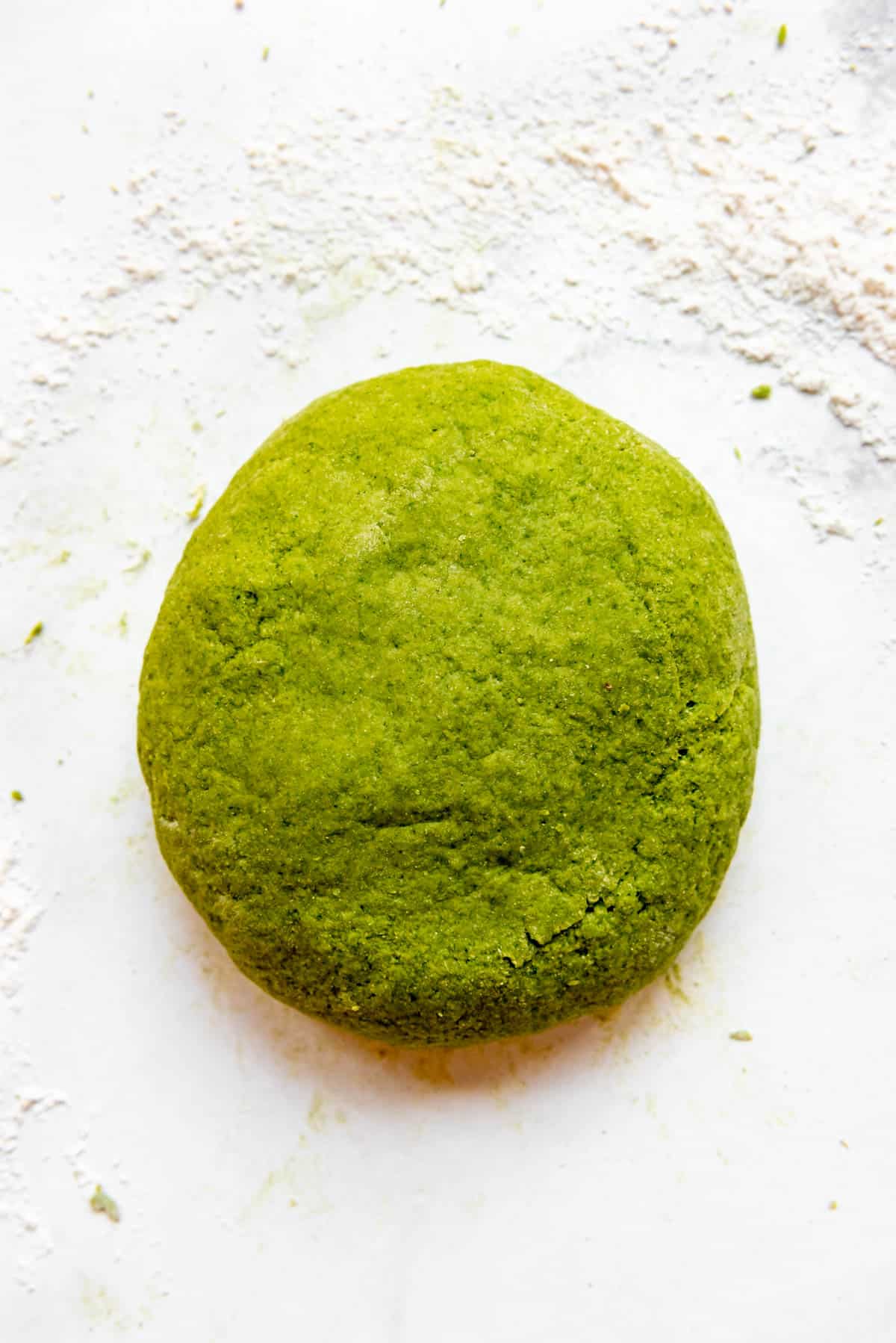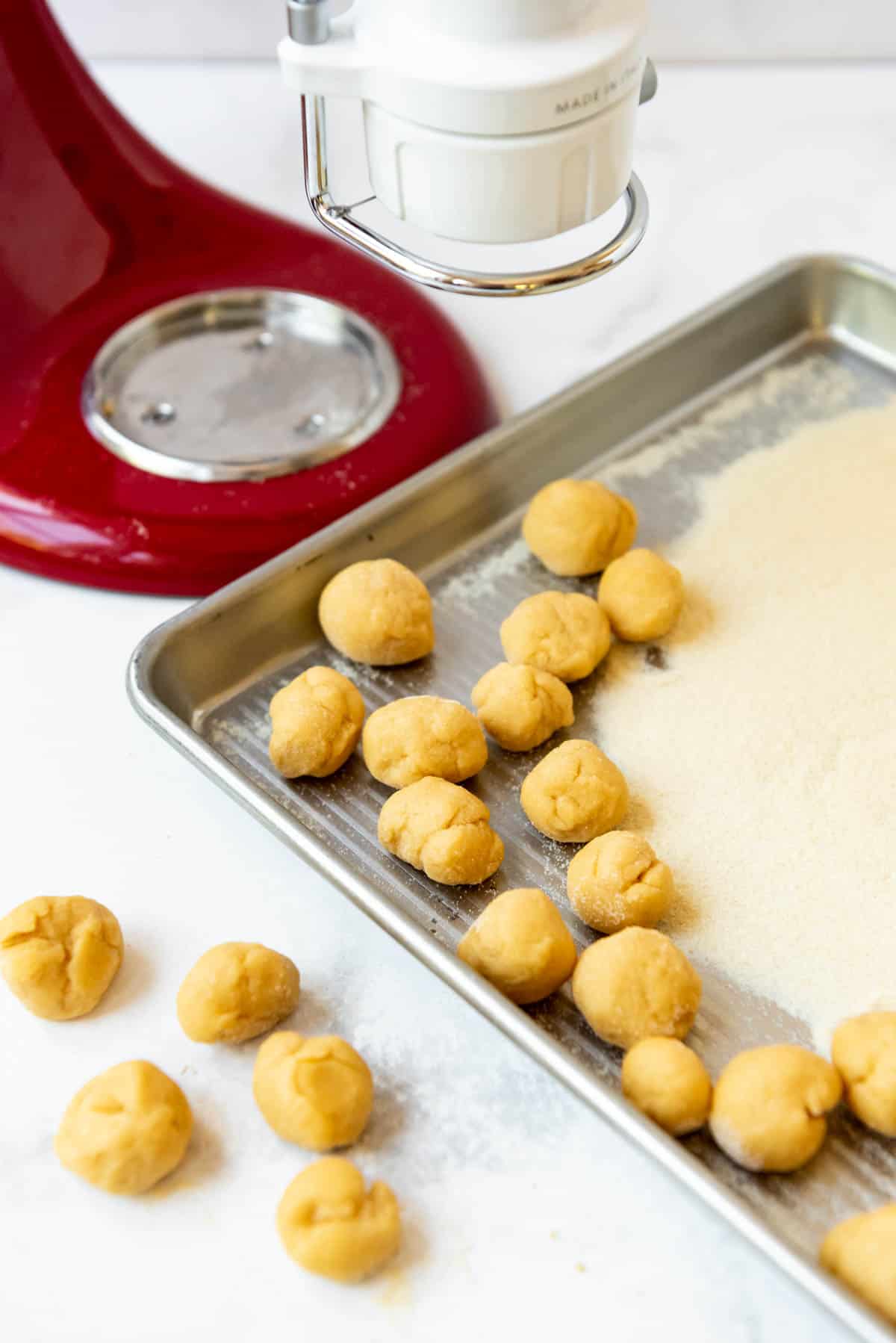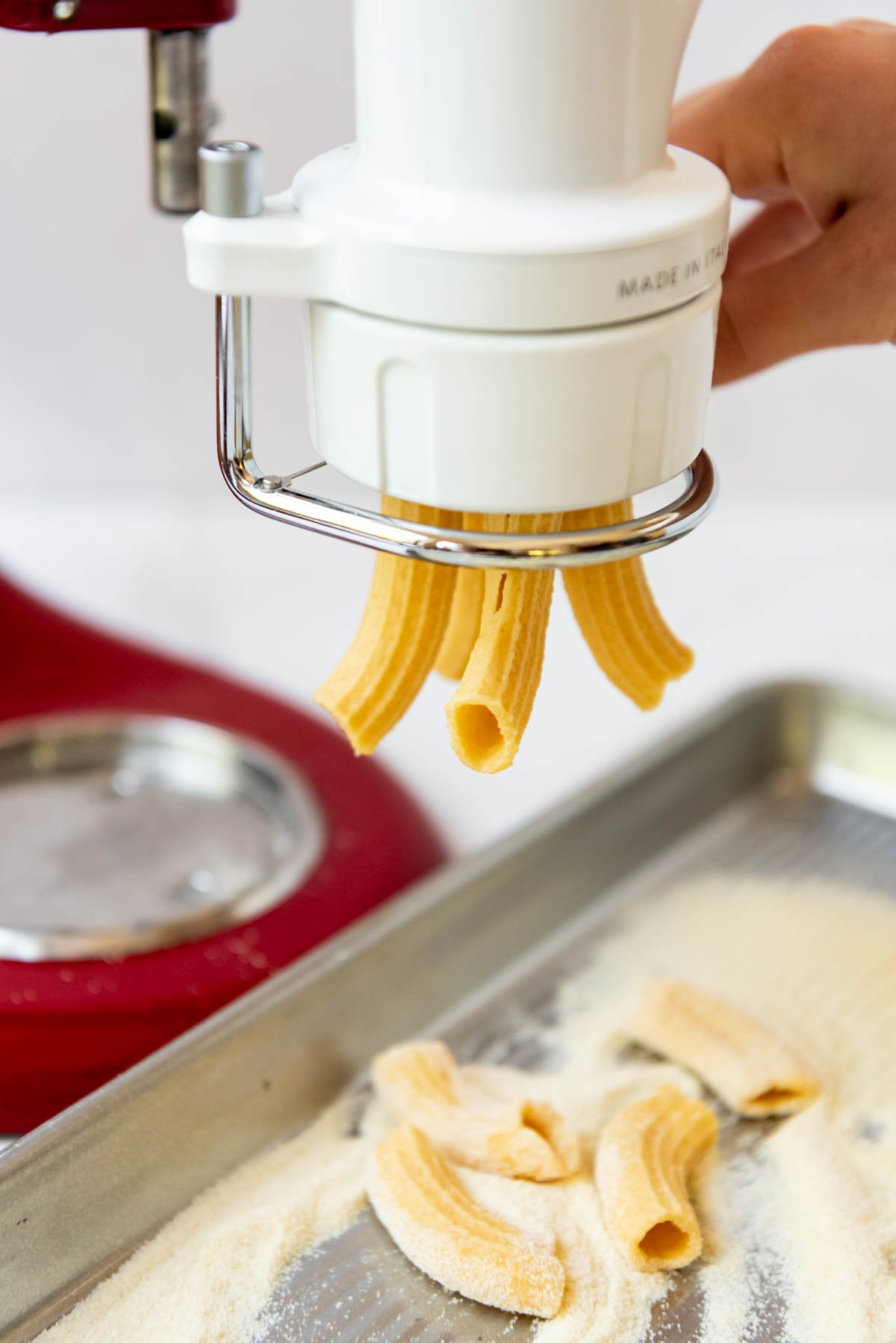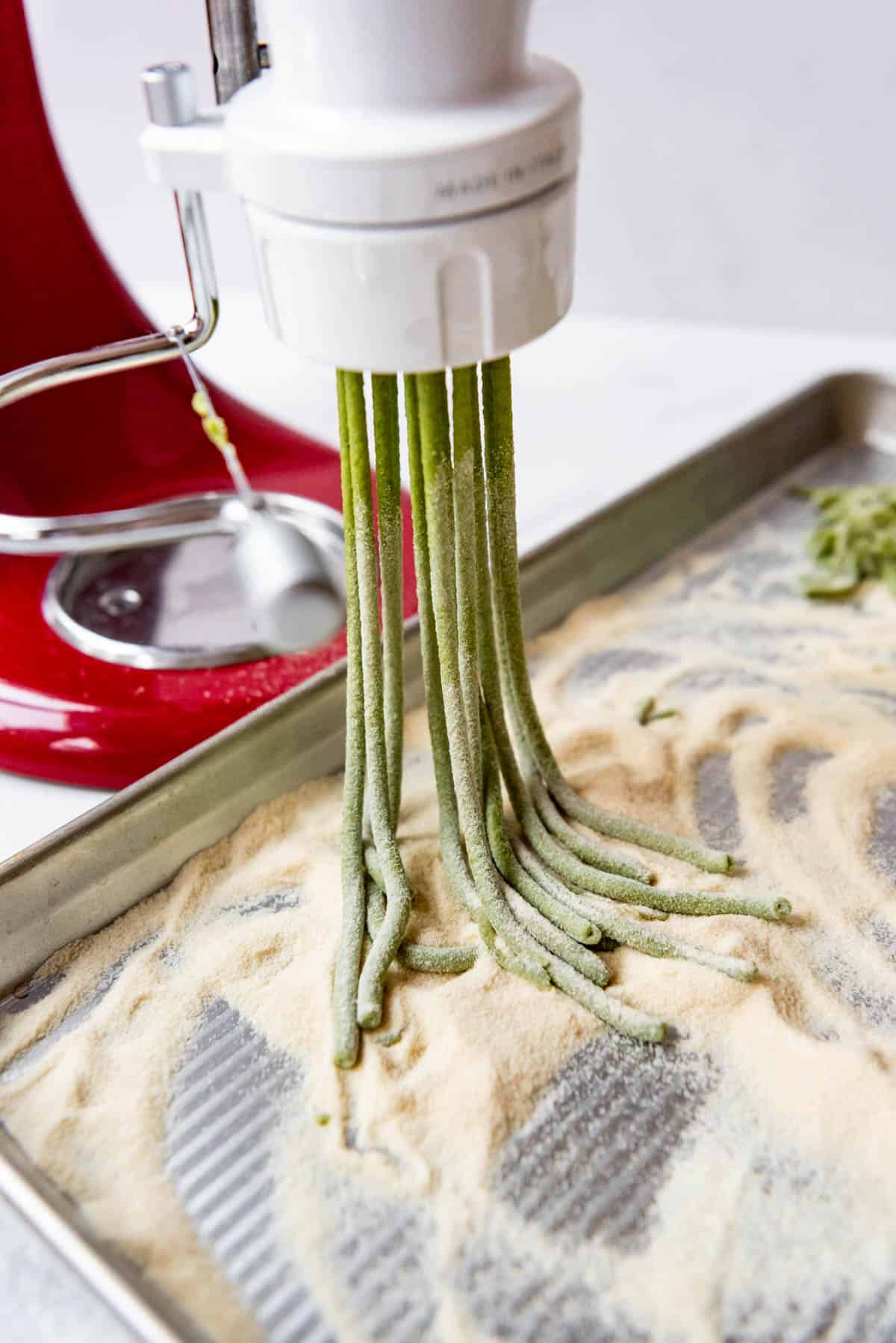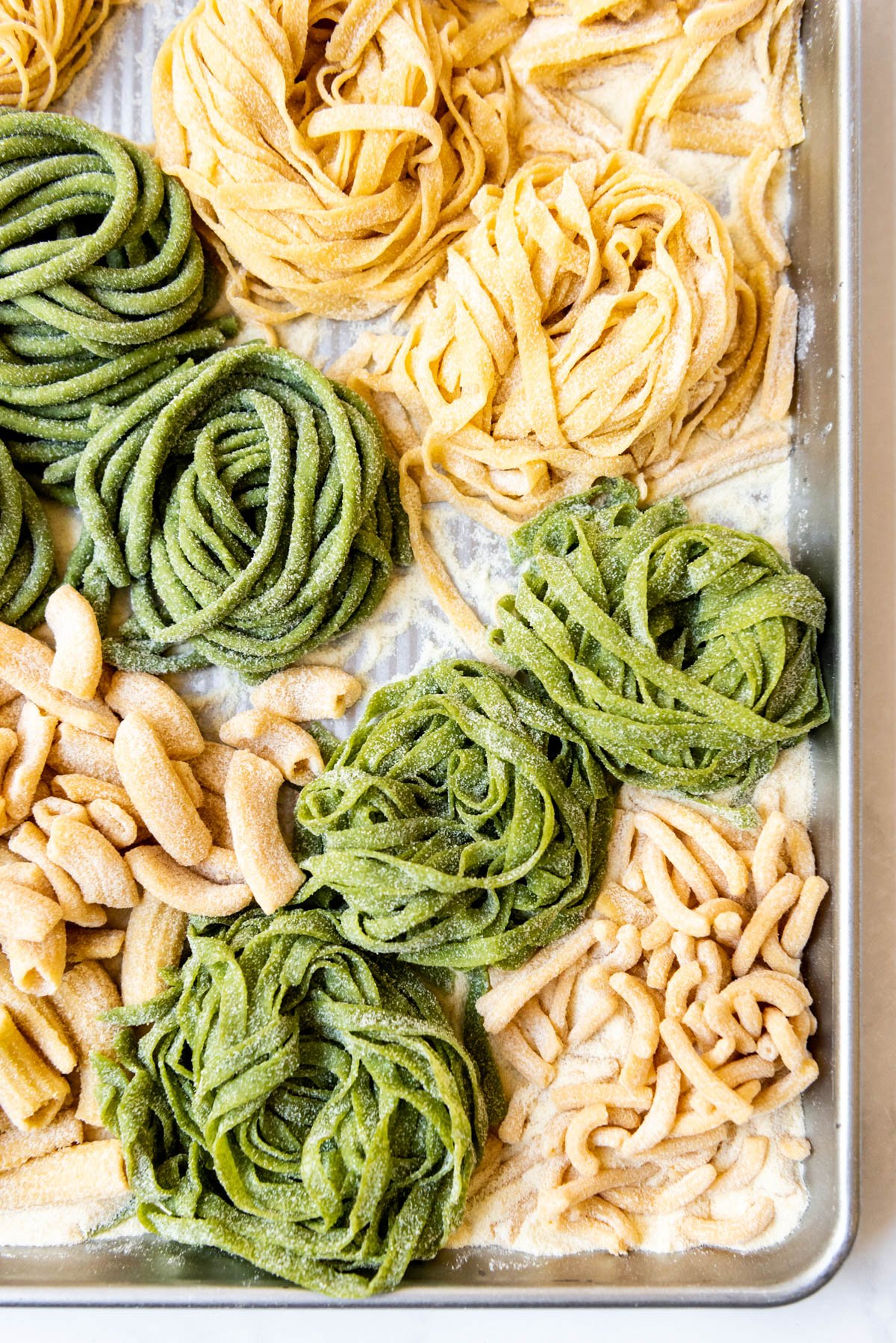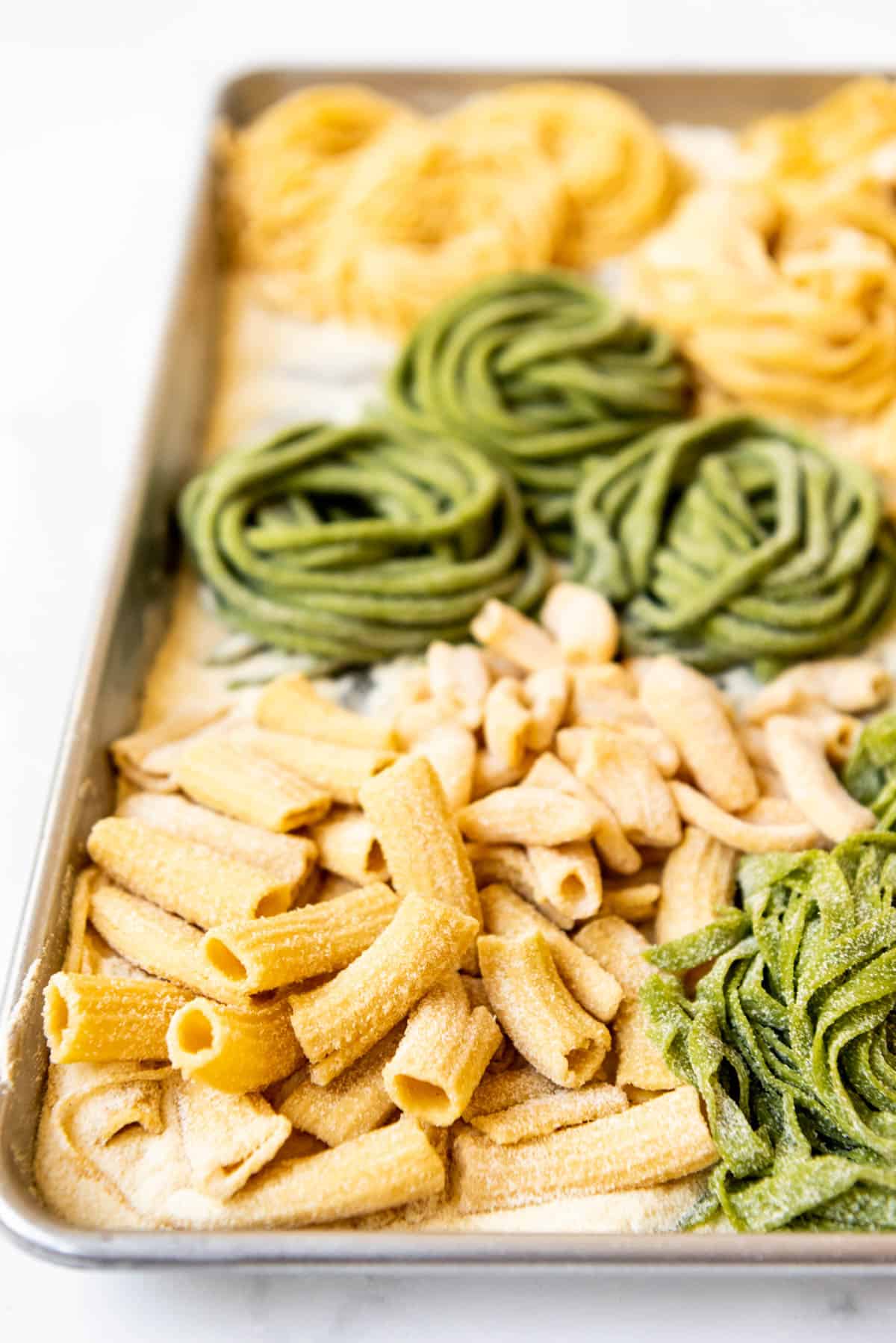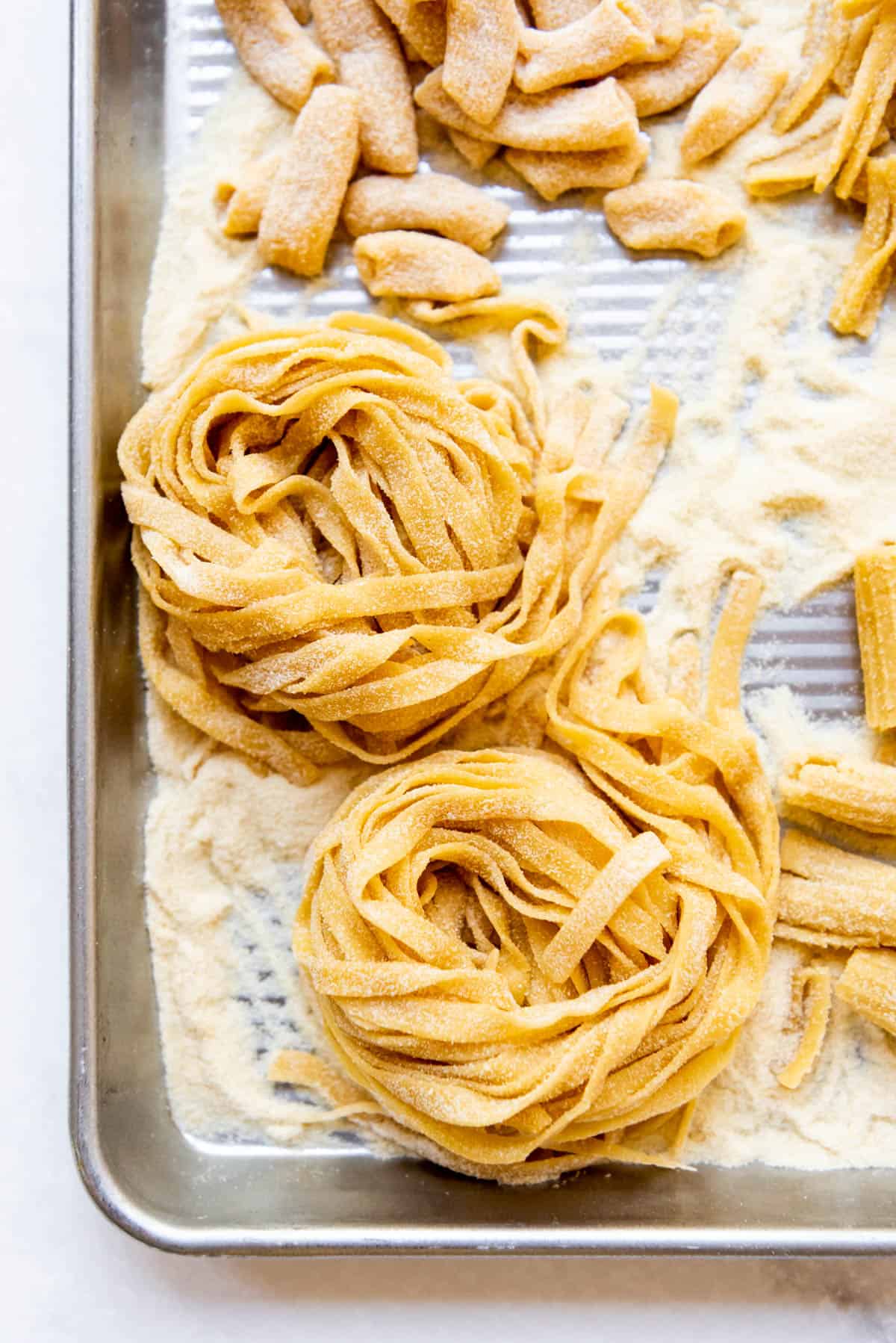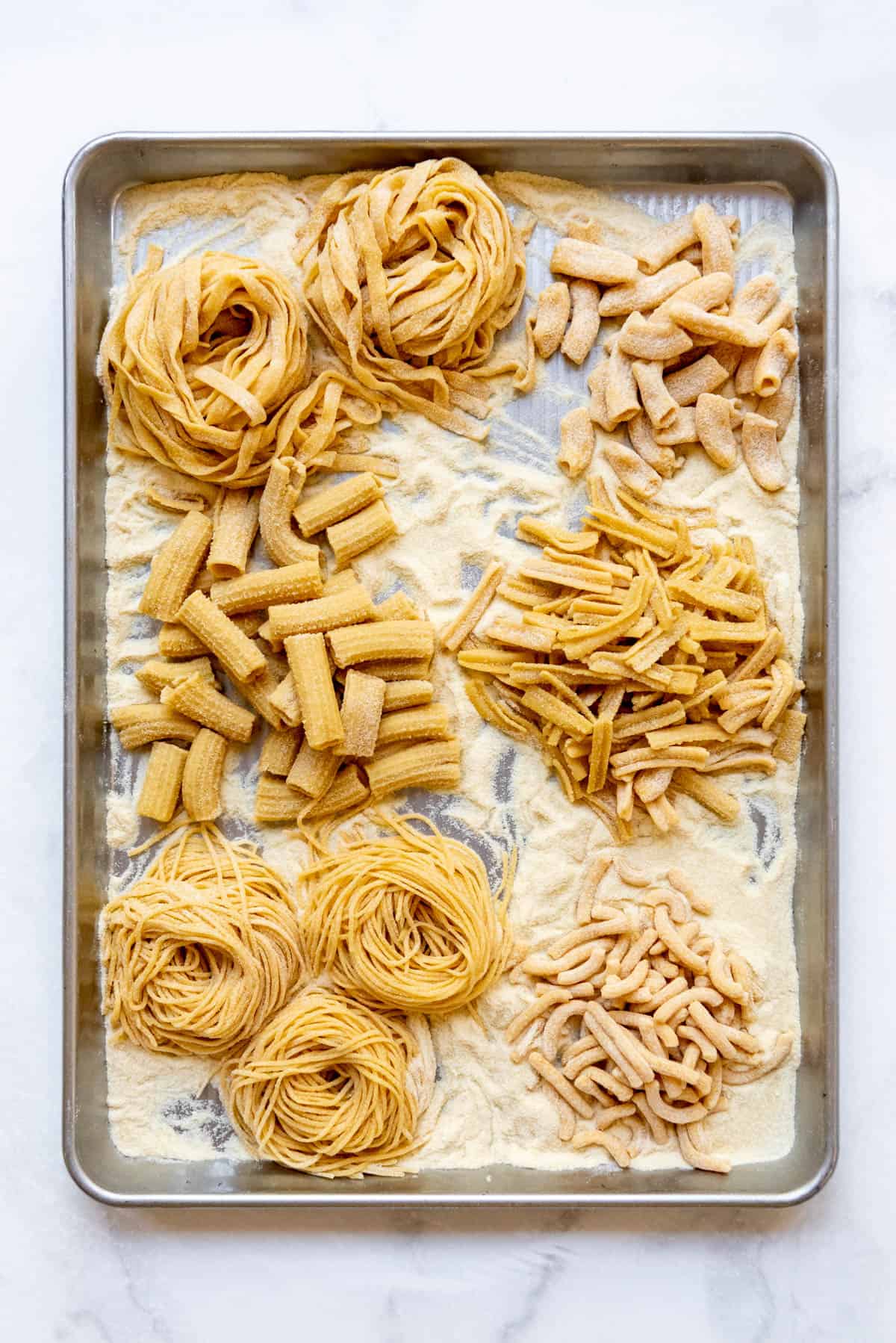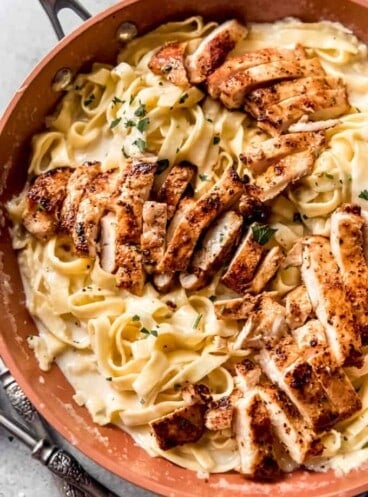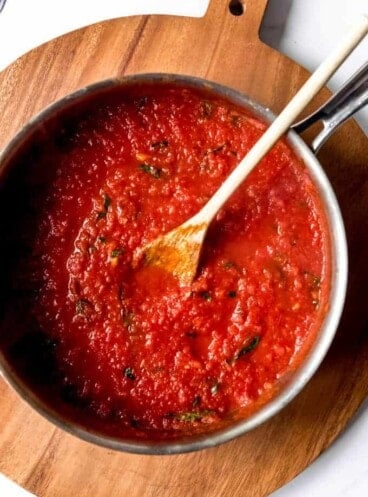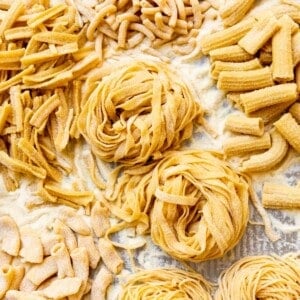I love fresh pasta. It cooks so quickly and tastes incredible, but I put off learning to make it for a long time because I was intimidated by the process. I can’t tell you how many times I have paid an exorbitant amount for a small package of fresh pasta at the farmer’s market! But it’s actually really simple to make fresh pasta from scratch at home with this easy homemade pasta recipe! The best part is that you can prep your fresh pasta up to 24 hours in advance (or even freeze it for longer storage!) and have it ready to go for your next dinner party. I’m sharing my best fresh pasta recipe with step-by-step instructions and all my tips and tricks to make your own fresh pasta your very first time!
Why You Should Make Fresh Pasta
Taste. Yes, you can taste a difference between fresh pasta made with semolina flour and the inexpensive dried pasta from the grocery store. It’s fun! There is something about the hands-on feeling of mixing the pasta dough, kneading it by hand, and running the dough through the pasta maker that is therapeutic and relaxing. Impress literally everybody. It’s true – people go crazy over fresh pasta and will think you are amazing for doing it when you really know it’s actually not difficult at all!
Using this one recipe, you will be able to make fresh pasta for:
Fettuccine, linguine, pappardelle Fresh lasagna sheets Spaghetti noodles Rotini, rigatoni, macaroni Homemade ravioli
Whether you are making long ribbon pasta like fettuccine (my personal favorite) or shaped pasta (awesome for all kinds of sauces), you’ll be set with the recipe and techniques explained in this post!
What You’ll Need
This is the best homemade pasta recipe and it only takes 5 ingredients, unless you are making flavored pasta like spinach pasta, cracked pepper pasta, or beet pasta. Scroll down to the recipe card below this post for ingredient quantities and full instructions.
Flour – I like to use half semolina flour and half all-purpose flour. But you could use all of one or the other, or use 00 flour or whole wheat flour instead. Eggs – You’ll need four large eggs. Water – Just enough to make a nice workable dough. Olive oil – I like to add just a little olive oil to my dough for flavor and to make it easier to work with. Salt – Pasta should be cooked in salted, boiling water, but we add a little salt to our pasta dough to make sure it isn’t bland.
How to Make Homemade Pasta Dough
Making pasta dough from scratch is as simple as making a well in a pile of flour, adding your eggs, and kneading until the dough is smooth.
Spinach Pasta
The recipe below is for a basic pasta dough, but to make spinach pasta, all you have to do it blend cooked, drained spinach or frozen spinach that has been thawed and squeezed out with the eggs and olive oil before adding this mixture to the flour. Then you proceed as normal! Historically, pasta dough is made by hand and you learn over the time the way the pasta dough should feel and whether it is too wet or too dry or it just needs more kneading. You can knead your pasta dough in a machine with a dough hook attachment for the initial mixing and kneading, but I highly recommend finishing most of the kneading with your hands so you learn the feel of good pasta dough. For pasta sheets for lasagna or ravioli, stop at the 2-3 settings from the thinnest setting. On my KitchenAid attachment, that would be setting 6 or 7. I find I don’t use setting 8 because at the point the dough is so thin it’s hard to work with without it tearing. I did find that I needed to use a little extra flour because the dough was slightly stickier, but otherwise everything is the same.
How to Make Fresh Ribbon Pasta
The easiest way is with a pasta roller that can either be purchased stand-alone or as an attachment to a KitchenAid stand mixer. It’s a bit pricy, but if you love fresh pasta you will find that you use it all the time. It can also be used for things like rolling out your cannoli dough if you want to try making homemade cannoli. I think it’s a great investment or it makes a great gift for the cook in your life (I actually got mine for Christmas a few years ago). I have also made fresh pasta with a friend’s counter top roller and they work just as well. You can find either manual crank rollers or electric powered rollers. Just choose one that works best for you!
How to Make Shaped Pasta
If you are making shaped pasta, it’s very easy if you have a pasta press attachment or stand-alone pasta extruder. You simply add balls of pasta dough to the machine with a die at the end. As the dough is pressed through the die, various shapes are cut. Just as with ribbon pasta, shaped pasta should be tossed in additional semolina flour soon after cutting so they don’t stick to each other. I actually found it worked best to sort of throw a little flour on the pasta shapes as they were coming out of the machine because sometimes when I cut them off using the built in wire cutter they would stick and clump together otherwise. You can see in the picture below of the spinach bucatini how towards the top of the pasta strands where they were just extruded they aren’t dusted with semolina yet. It can be a bit messy with flour everywhere, but I just keep a clean baking sheet under the extruder and it contains most of the mess. There are also many specialty pasta shapes that can be made the old-fashioned way, entirely by hand without any machine at all!
How to Make Pasta Without a Machine
Use a rolling pin (affiliate link) to roll out the pasta dough and cut it into your desired shapes. You can purchase all kinds of fancy pasta cutters or just use a pizza cutter or sharp knives. Some pasta shapes that you can make by hand include orecchiette, farfalle, There are some great video tutorials on YouTube for many different types of pasta shapes, so I would recommend searching there.
How to Make Pasta With a Machine
If you have a sturdy stand mixer like a KitchenAid, you can start by mixing the flour and eggs with the dough hook on the lowest setting until the dough comes together. At that point I would still recommend turning the dough out onto a clean counter and kneading by hand. There are really great KitchenAid attachments that can be used for making homemade pasta in all kinds of shapes.
How to Store Homemade Pasta
Once your pasta is done, you can either cook it immediately or store it if you are making it a little bit ahead. If you are planning to cook it within 24 hours, you can just store the fresh pasta in an airtight container in the fridge. If you know you will be waiting longer than that, you might want to freeze the pasta, then portion it into airtight containers and store in the freezer for up to 6 months. There is no need to thaw frozen pasta before cooking it. Just add it to the boiling water and cool like normal.
How to Cook Homemade Pasta
Fresh pasta cooks much more quickly than dried pasta. While most dried pasta takes 7 to 9 minutes to reach al dente, fresh pasta only takes around 3 to 5 minutes to cook to al dente perfection where it is tender but still has a firmness to it. If you are making fresh pasta to go with another dish or sauce, it’s best to wait until everything else is done before cooking and adding the fresh pasta.
Tips for Success
Use fresh eggs. Because fresh pasta uses so few ingredients, you will definitely notice a difference in the quality of the ingredients you use. Fresh, whole eggs will give a delicious flavor to the pasta that will make it stand out from store-bought pasta. Invest in the tools to make it easier and more enjoyable. Technically, you can make homemade noodles with just a rolling pin (affiliate link) on a floured surface, but it’s hard work to roll out the pasta dough thin enough. Trust me, I’ve tried. I recommend getting a KitchenAid pasta roller attachment for your KitchenAid mixer if you have one, or investing in a manual pasta cutter that attaches to your counter and can be cranked by hand. Get the family involved! Kids love helping knead the pasta dough and run it through the pasta rollers or catch the pasta as it comes out of the machine. There is a lot of great hands-on fun to be had making homemade pasta!
How to Store Fresh Pasta
Although you can cook with your fresh pasta right away, you can also store it in an airtight container in the fridge for 24 hours. Any longer than that and I would recommend freezing your pasta. You can also just make the pasta dough ahead and store it in the fridge overnight, then let it come to room temperature the next day before rolling and cutting. To freeze fresh pasta, place your pasta nests (for ribbon pasta) on a baking sheet lined with parchment paper with a little space between them. Cover with plastic wrap and freeze for 2 hours. At this point, you can transfer the pasta nests to a freezer-safe ziploc bag or airtight container for longer storage of up to 3 months.
Our Favorite Pasta Recipes to Use With Homemade Pasta
Roasted Red Pepper Sauce Recipe TikTok Beet Pasta Creamy Vodka Sauce Best Bolognese Sauce Recipe
Chicken Fettuccine Alfredo
Homemade Basil Pesto Recipe
Classic Homemade Marinara Sauce
Let me know what you thought with a comment and rating below. You can also take a picture and tag me on Instagram @houseofnasheats or share it on the Pinterest pin so I can see.
